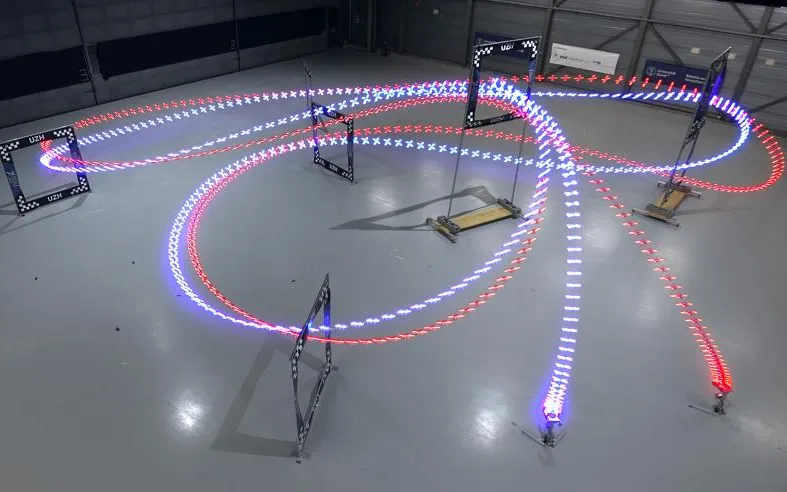AI Pilot Outperforms Professional Drone Racers in Competition
An AI system has once again demonstrated its superiority over human trainers, raising concerns about our species’ ability to survive future robot uprisings. Researchers from the University of Zurich, in collaboration with Intel, recently tested their AI piloting system called “Swift” against three world champion drone racers. Surprisingly, none of the racers were able to surpass its fastest time, indicating the remarkable capabilities of the AI.
Swift is the culmination of years of artificial intelligence and machine learning research at the University of Zurich. In 2021, the team pitted an earlier iteration of the flight control algorithm, which used a series of external cameras to confirm its location in space in real time, against amateur human pilots, all of whom easily outperformed each round of each competition. test. This result was a milestone in itself, as previously autonomous drones relied on simplified physics models to continuously calculate their optimal flight path, which greatly reduced their top speed.
This week’s result marks another milestone, not only because the AI surpassed humans tasked with flying drones quickly, but because it did so without the cumbersome external camera system of its predecessor. The Swift system “reacts in real time to data collected by an on-board camera, similar to the camera used by human competitors,” the UZH Zurich publication reads. It uses an integrated inertial measurement unit to track acceleration and speed, while a built-in neural network localizes its position in space using information from the front cameras. All this information is fed to the central control unit – itself a deep neural network – which crunches the numbers and plots the shortest / fastest route around the track.
“Physical sports are more challenging for AI because they are less predictable than board or video games. We don’t have perfect knowledge of the drone and environment patterns, so the AI has to learn them by interacting with the physical world,” Davide Scaramuzza, head of the Robotics and Perception Group at the University of Zurich , said in a statement. .
Instead of letting the quadcopter grind its way around the track for the month its controller’s artificial intelligence needs to slowly learn the different textures and swings of the circuit, the research team simulated the learning session virtually. It all took an hour. And then the drone went to work against 2019 Drone Racing League Champion Alex Vanover, 2019 MultiGP Drone Racing Champion Thomas Bitmatta and three-time Swiss Champion Marvin Schaepper.
The Swift set the fastest lap overall, beating the humans by half a second, although the pocket pilots proved more adaptable to the changing conditions during the race. “Drones have limited battery capacity; they need most of their energy to stay in the air. Thus, by flying faster, we increase their usefulness,” Scaramuzza said. As such, the research team hopes to continue developing the algorithm for potential use in search and rescue operations, as well as forest monitoring, space exploration and film production.




